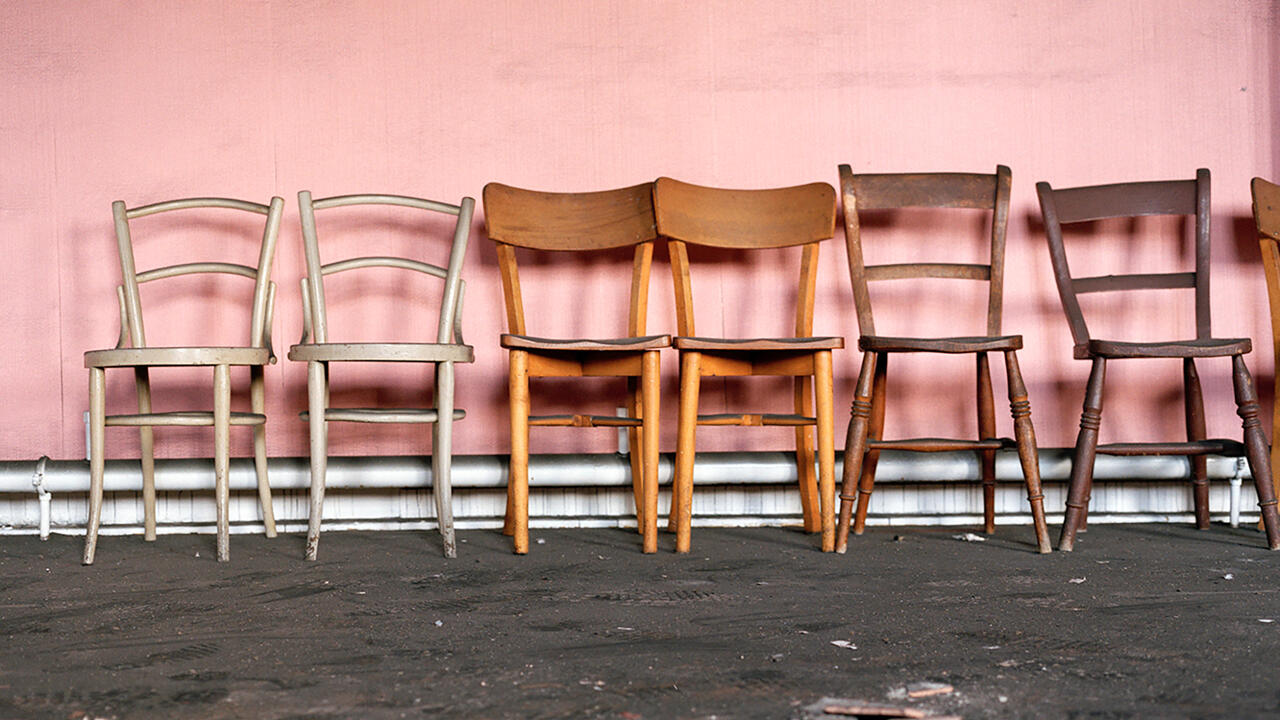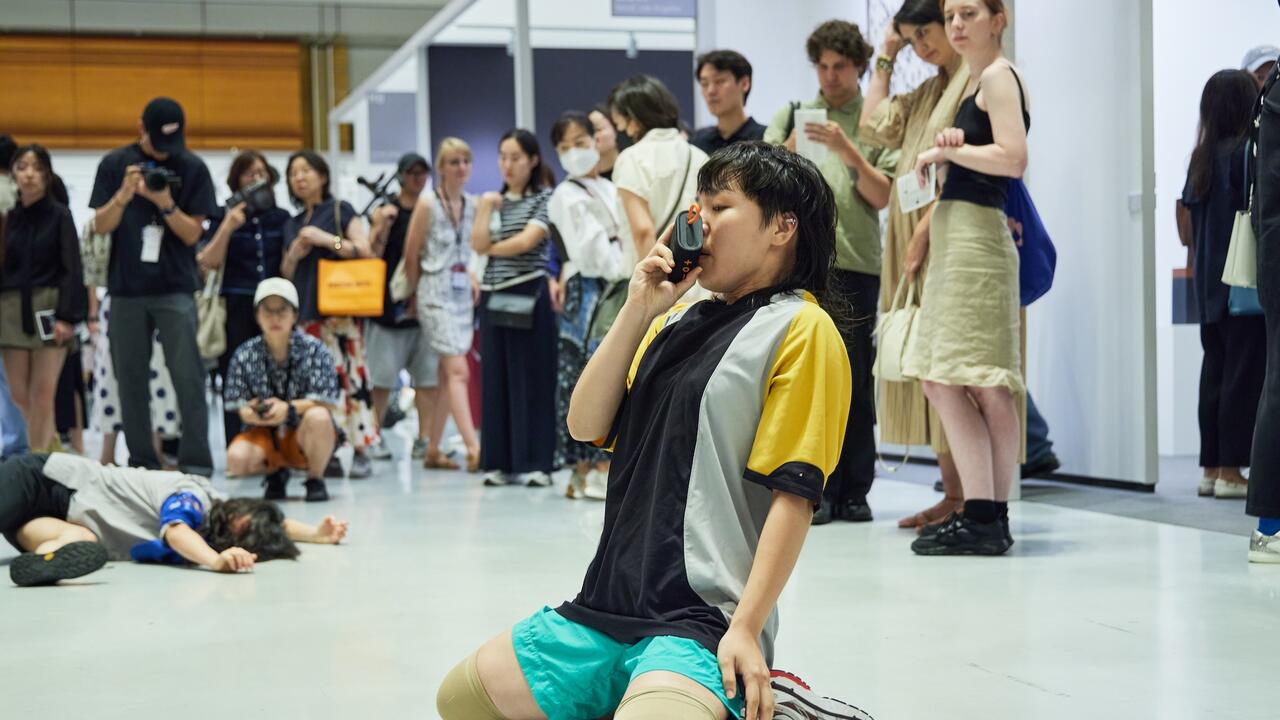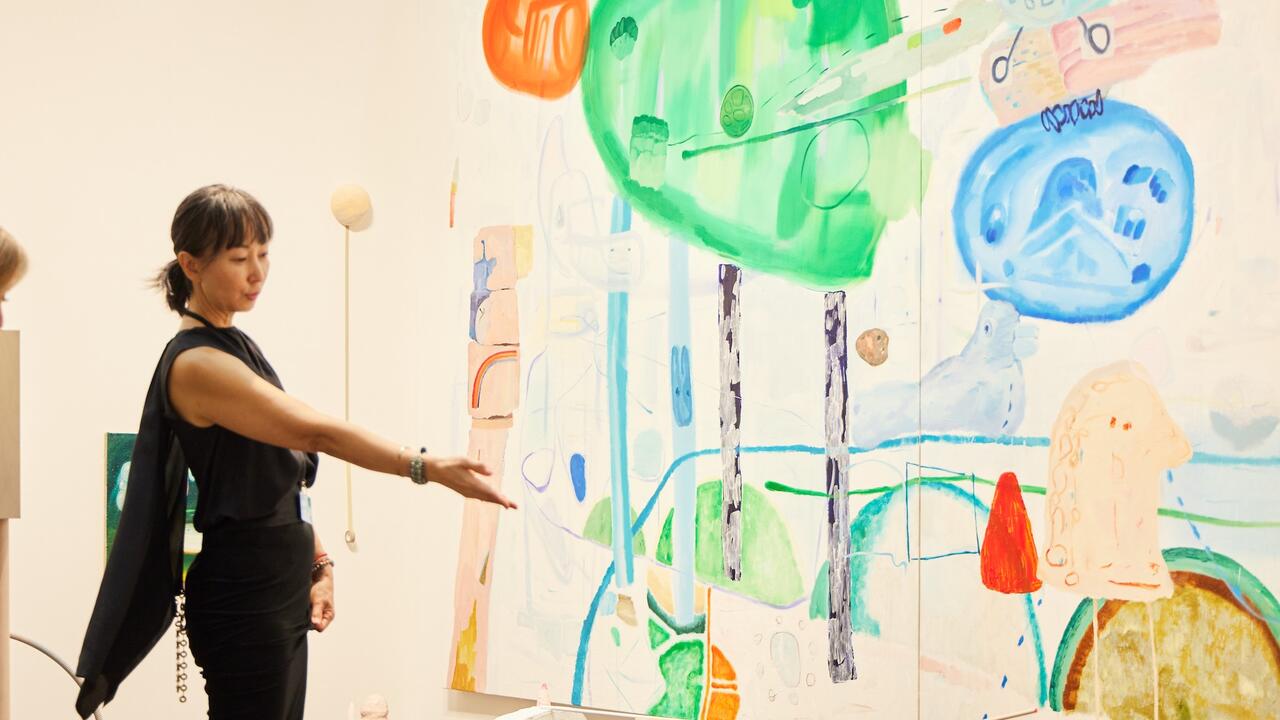Postcards from Shanghai no. 1
Almost literally the first person I ran into when I arrived in Shanghai was Boris Groys. It couldn’t have been anyone better when it came to chat about the building where the SH Contemporary art fair is housed (Groys and I, along with other speakers, had been invited by Anton Vidokle of e-flux to participate in a lecture series there): The Shanghai Exhibition Center is a huge complex that was a gift by Stalinist Soviet Union to Maoist China; it’s a pompous birthday cake, a communist Disney palace, typical of that era with its sugary toppings on the roofs and its flowery ornaments in unexpected places. Oddly, but maybe appropriately, the central grand entrance of the building was actually not used as an entrance (one entered less grandly through the vestibules). Groys said he wondered why no-one seemed to want to make use of the pomp of the place by putting up, say, ridiculously large Jeff Koons sculptures. It’s the kind of suggestion that makes sense coming from an expert of Stalinism such as Groys; but it also made sense to me – irrespective of the particular sensibilities of the organisers of the fair – that in today’s China things are played in a bit more of a kind of restrained way even when they are big. This is not about the Protestant concept of stealth wealth, i.e. expensive labels that don’t display labels, money only detectable for those in the know etc. – in Shanghai, of course, wealth is anything but stealth. (I passed by a night club that had, I presume in the course of a promotional event, two Lamborghini sports cars placed on each side of the entrance.) No, in general terms, this is rather about a kind of regiment that works with silent structural implementation rather than open confrontation. The logo for the Shanghai World Expo 2010 is a small, really silly mascot called ‘Haibao’ that according to the official website, is ‘created from a Chinese character meaning people’, embodying ‘the character of Chinese culture.’

It’s this kind of cuteism that feels stealth. It’s something that you sense once you try to go online. I didn’t get that other notoriously cute mascot on my screen of course – the little police officer that appears on screens of Internet users in Shenzhen, southern China.

But even without it, you sense the presence of the Great Firewall: Google image search works for a couple of minutes but then it’s usually interrupted; anything with the word ‘blog’ (or wordpress) in the URL-name is usually blocked right away. Of course there are ways to circumvent that, you can use proxy servers or a paid VPN connection to a server outside China; but obviously that whole business is tedious – and is meant to be.
That said, the very real presence of censorship in China – pages demanded to be torn out of art magazines, works not allowed to be hung, often for silly reasons such as supposed pornographic display – can also become part of an exaggerated logic of paranoia, which in turn can be fuelled into art world hype. The case of Ai Weiwei being beaten up by policemen, according to the available sources, is all too real to be taken for merely self-promotion; but one can be suspicious a little when rumours abound that supposedly Xu Zhen’s show at Shangart Gallery was threatened to be closed. But more about that soon in part two.
Almost literally the first person I ran into when I arrived in Shanghai was Boris Groys. It couldn’t have been anyone better when it came to chat about the building where the SH Contemporary art fair is housed (Groys and I, along with other speakers, had been invited by Anton Vidokle of e-flux to participate in a lecture series there): The Shanghai Exhibition Center is a huge complex that was a gift by Stalinist Soviet Union to Maoist China; it’s a pompous birthday cake, a communist Disney palace, typical of that era with its sugary toppings on the roofs and its flowery ornaments in unexpected places. Oddly, but maybe appropriately, the central grand entrance of the building was actually not used as an entrance (one entered less grandly through the vestibules). Groys said he wondered why no-one seemed to want to make use of the pomp of the place by putting up, say, ridiculously large Jeff Koons sculptures. It’s the kind of suggestion that makes sense coming from an expert of Stalinism such as Groys; but it also made sense to me – irrespective of the particular sensibilities of the organisers of the fair – that in today’s China things are played in a bit more of a kind of restrained way even when they are big. This is not about the Protestant concept of stealth wealth, i.e. expensive labels that don’t display labels, money only detectable for those in the know etc. – in Shanghai, of course, wealth is anything but stealth. (I passed by a night club that had, I presume in the course of a promotional event, two Lamborghini sports cars placed on each side of the entrance.) No, in general terms, this is rather about a kind of regiment that works with silent structural implementation rather than open confrontation. The logo for the Shanghai World Expo 2010 is a small, really silly mascot called ‘Haibao’ that according to the official website, is ‘created from a Chinese character meaning people’, embodying ‘the character of Chinese culture.’

It’s this kind of cuteism that feels stealth. It’s something that you sense once you try to go online. I didn’t get that other notoriously cute mascot on my screen of course – the little police officer that appears on screens of Internet users in Shenzhen, southern China.

But even without it, you sense the presence of the Great Firewall: Google image search works for a couple of minutes but then it’s usually interrupted; anything with the word ‘blog’ (or wordpress) in the URL-name is usually blocked right away. Of course there are ways to circumvent that, you can use proxy servers or a paid VPN connection to a server outside China; but obviously that whole business is tedious – and is meant to be.
That said, the very real presence of censorship in China – pages demanded to be torn out of art magazines, works not allowed to be hung, often for silly reasons such as supposed pornographic display – can also become part of an exaggerated logic of paranoia, which in turn can be fuelled into art world hype. The case of Ai Weiwei being beaten up by policemen, according to the available sources, is all too real to be taken for merely self-promotion; but one can be suspicious a little when rumours abound that supposedly Xu Zhen’s show at Shangart Gallery was threatened to be closed. But more about that soon in part two.















